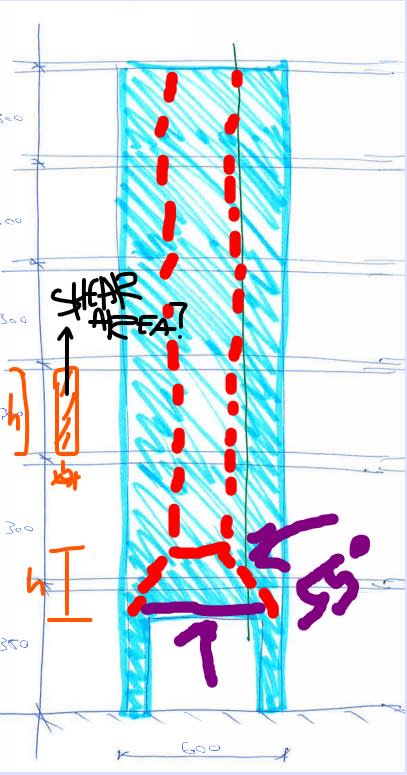dave_89
Structural
- Nov 28, 2021
- 4
Hello,
I have a practical question about shear strength of deep beams that are not a typical transfer beams but a continuos membrane through several stories.
Flexural capacity is not a thing that concerns me but shear is.
When you look at the examples that are attached to this message, there is plenty of shear cross-section area through the full height of the walls. But if we look at the wall as a deep beam and say that everything that happens in the area that is higher than the span of the beam (roughly one storey above)is a dead weight than shear becomes a governing design condition (drawings on the right). I'm interested in your thoughts on this topic because it's something that happens regularly in multi-storey residential buildings.
Thank you all for your comments and thoughts!
I have a practical question about shear strength of deep beams that are not a typical transfer beams but a continuos membrane through several stories.
Flexural capacity is not a thing that concerns me but shear is.
When you look at the examples that are attached to this message, there is plenty of shear cross-section area through the full height of the walls. But if we look at the wall as a deep beam and say that everything that happens in the area that is higher than the span of the beam (roughly one storey above)is a dead weight than shear becomes a governing design condition (drawings on the right). I'm interested in your thoughts on this topic because it's something that happens regularly in multi-storey residential buildings.
Thank you all for your comments and thoughts!









